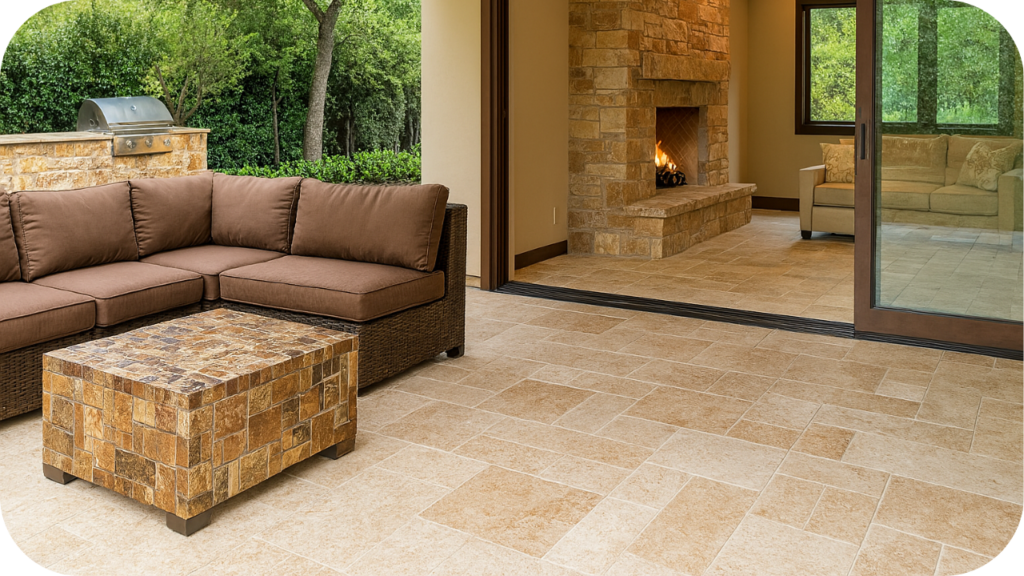
Travertine tiles have long been a favourite for outdoor paving, prized for their natural elegance and adaptability across different design styles.
Formed over centuries, each tile features unique textures and tones that bring warmth and authenticity to outdoor spaces. Known for their durability, slip resistance, and ability to stay cool underfoot, they suit both practical and decorative applications.
In this article, we’ll share eight inspiring design ideas that showcase how outdoor travertine tiles can transform everything from pool surrounds to rooftop terraces.
1. Elegant Pool Surrounds
Few materials can enhance a pool area as effortlessly as travertine tiles. Their naturally textured surface helps reduce slips, providing peace of mind for families and guests.
In the height of summer, the stone stays pleasantly cool underfoot, making barefoot strolls around the water a pleasure. Choosing lighter shades such as ivory or cream can evoke a soft Mediterranean atmosphere, pairing beautifully with clear blue water.
In pool environments, sealing the tiles is important to protect them from chlorinated or saltwater exposure. With the right care, a travertine pool surround offers both style and comfort, turning the poolside into a refined and welcoming retreat.
2. Classic Patio and Alfresco Dining Areas
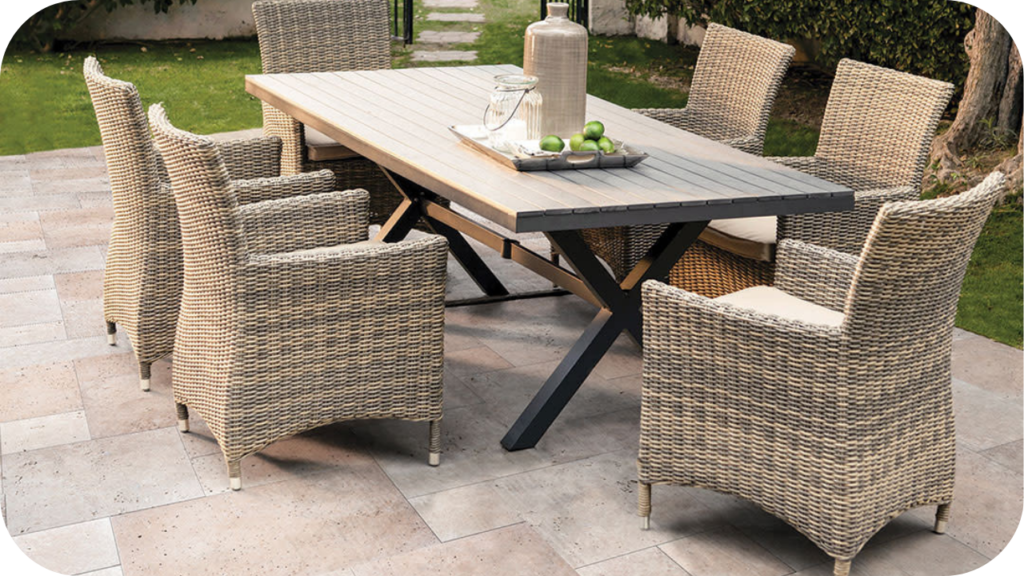
A patio paved with travertine tiles creates an inviting space where meals and conversations feel more relaxed. The stone’s warm tones can be matched to complement outdoor furniture, whether it’s timber, wicker, or metal.
Travertine adapts to different layout choices, so you can opt for the structured look of a straight lay, the casual charm of a French pattern, or the movement of a herringbone design. The gentle variations in colour add depth without overwhelming the space.
Over time, the surface develops a soft patina, enhancing its natural appeal. When planned thoughtfully, a travertine patio becomes the perfect setting for both everyday dining and special gatherings.
3. Stylish Driveways and Pathways
Driveways and garden paths benefit greatly from the strength and durability of travertine. This stone handles frequent traffic without compromising its appearance, making it a reliable choice for practical spaces.
Earthy shades, from sandy beige to warm walnut, blend effortlessly with surrounding plants and garden beds, creating a cohesive outdoor look. A tumbled finish can add extra grip, especially useful for sloped areas or regions with wet weather.
Whether leading to the front entrance or winding through a landscaped garden, travertine paths and driveways deliver both function and beauty. Their understated elegance ensures they complement the overall design without distracting from the home itself.
4. Relaxing Courtyards
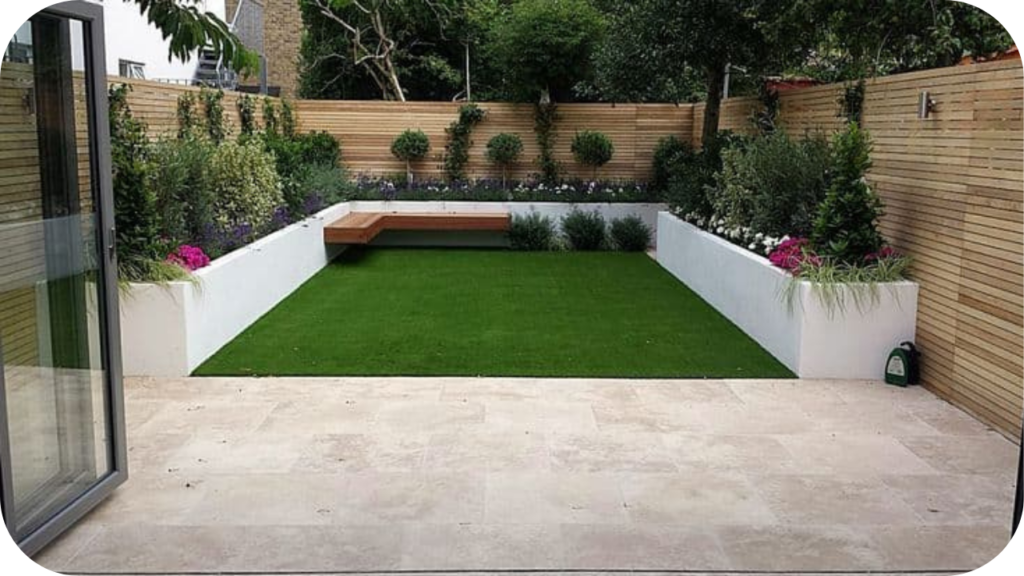
Transforming a small courtyard into an elegant escape is simple with travertine tiles. Their natural variation gives even compact spaces a sense of richness and character.
Pairing the stone with lush planters, comfortable seating, and subtle lighting can create a retreat that feels far removed from the everyday. Choosing uniform tile sizes provides a clean, modern edge, while warm-toned varieties keep the area inviting.
Travertine’s durability means it will withstand weather changes without losing its charm. By paying attention to proportion and accessories, a courtyard can become a private sanctuary where you can read, entertain, or enjoy a quiet morning coffee in comfort.
5. Resort-Style Outdoor Entertaining Zones
Large outdoor entertaining areas benefit from the versatility of travertine. Paving that flows seamlessly from a dining zone to a lounge area makes gatherings feel more connected and comfortable.
Mixing shades within the same colour family adds subtle variation, creating visual interest without disrupting the design. The stone pairs beautifully with other materials such as timber decking, stacked stone walls, or textured fabrics.
This layering of textures adds a sense of luxury while keeping the atmosphere relaxed. Travertine’s natural resilience means the space can handle high foot traffic during parties or family get-togethers, maintaining its elegance and functionality year after year.
6. Outdoor Staircases and Steps
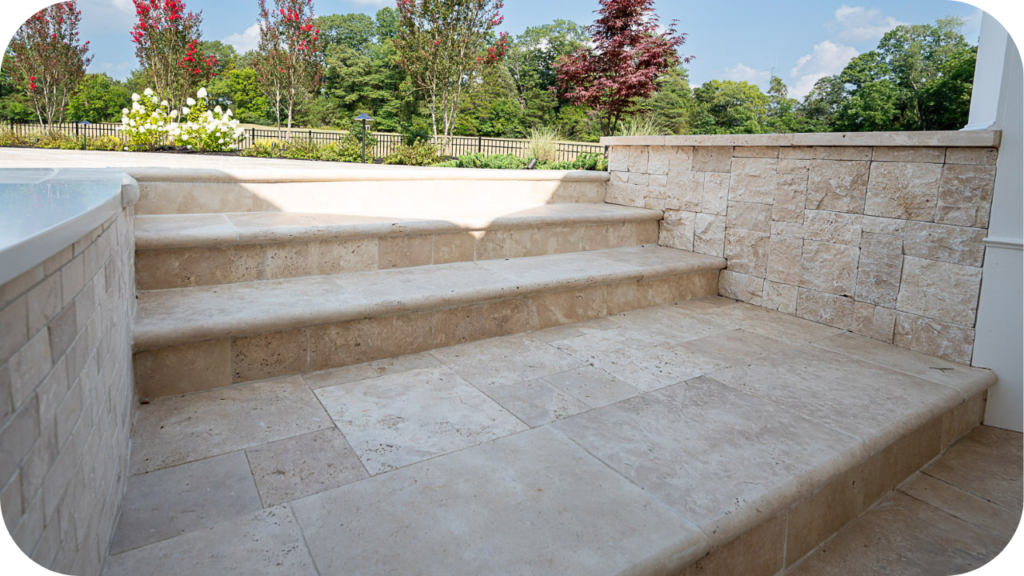
Travertine works well for outdoor staircases, combining strength with an attractive finish. Its non-slip textures provide a safer surface, particularly in areas that may become wet from rain or pool water.
Coordinating the treads with the surrounding paving creates a consistent look that ties the whole outdoor space together. The stone’s subtle colour variation also helps steps blend naturally into the landscape. With proper installation, travertine stairs hold up against constant use, resisting chips and cracks.
Adding low-level lighting along the edges can highlight the stone’s texture at night, improving visibility while showcasing the material’s understated beauty in both daylight and evening settings.
7. Outdoor Kitchens and BBQ Areas
Travertine’s heat resistance makes it an excellent flooring option for spaces where cooking and grilling take place. The stone’s neutral tones pair well with cabinetry, benchtops, and splashbacks, whether you prefer sleek stainless steel, rustic timber, or natural stone finishes.
Extending the material from the floor to other elements, such as benchtops or a feature wall, can tie the design together. Regular sealing will protect the tiles from food spills and grease, keeping them looking fresh.
The natural charm of travertine ensures the space feels welcoming and comfortable, encouraging people to gather, cook, and enjoy the outdoors throughout the year.
8. Rooftop Terraces and Balconies
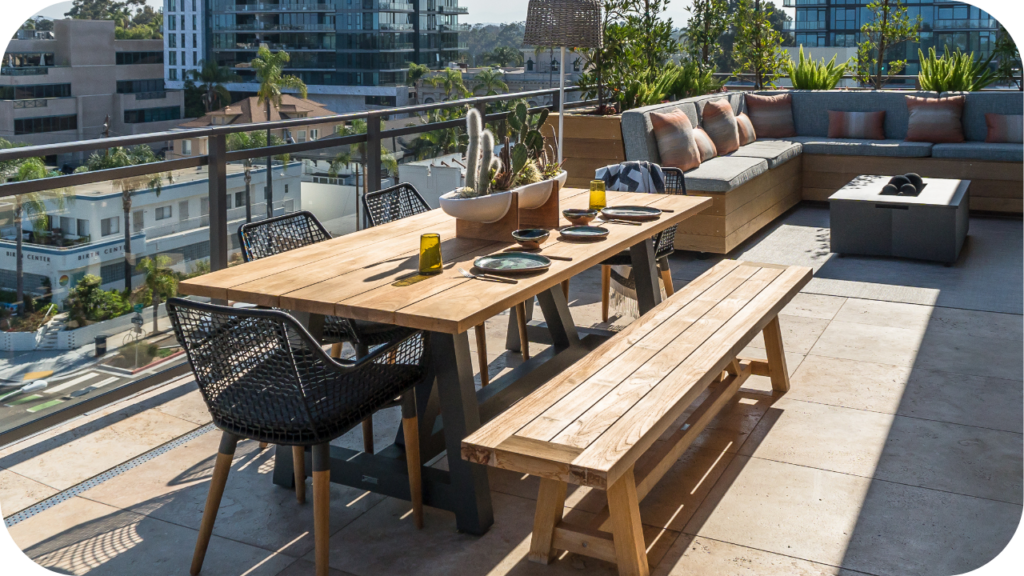
For elevated spaces like rooftop terraces or balconies, travertine provides both style and practicality. Lightweight tile options make installation easier without compromising durability.
Selecting lighter shades helps to reduce heat absorption, ensuring the space remains comfortable even on sunny days. Travertine can create a seamless flow between indoor and outdoor living, especially when paired with matching interior flooring.
The stone’s natural texture complements views of city skylines or surrounding landscapes, enhancing the overall experience. With the right furniture and greenery, a rooftop paved in travertine becomes an inviting extension of the home, perfect for relaxing or entertaining in an elevated setting.
How to Choose the Right Travertine for Paving
Travertine offers many styles and specifications, but the right choice depends on your space and needs. These tips will help you select tiles that perform beautifully outdoors.
1. Select the Most Suitable Finish
Pick a finish that matches both the style and function of your space. Tumbled travertine offers grip for wet or high-traffic areas, honed delivers a smooth matte feel, and brushed gives texture without losing refinement.
2. Match the Colour to Your Design Goals
Choose a tone that complements your outdoor environment. Lighter colours open up small spaces and reflect more light, while deeper shades add warmth and depth. Consider how the colour will pair with the surrounding architecture and landscaping.
3. Choose the Correct Thickness for Durability
Outdoor paving needs to withstand weather changes and regular use. Thicker tiles are best for high-traffic areas such as driveways or steps, while standard thickness suits patios and courtyards where loads are lighter.
4. Consider the Tile Size and Layout Pattern
Larger tiles can make small areas appear more spacious, while smaller formats suit intricate layouts or curved pathways. Patterns like French or herringbone add extra visual interest to outdoor designs.
5. Ensure the Finish Suits the Surrounding Environment
If your landscaping features stone walls, timber decks, or lush planting, choose a travertine style that complements these elements. Consistency in tone and texture creates a harmonious and balanced outdoor look.
Care and Maintenance for Outdoor Travertine
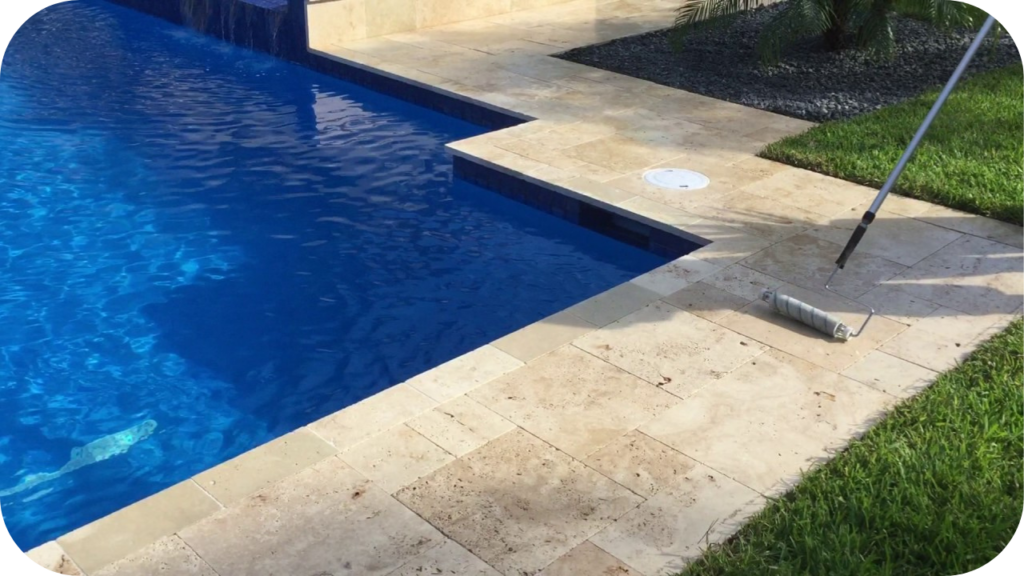
Keeping travertine in top condition is straightforward with a few simple steps. These practices will help preserve its beauty and ensure it performs well in outdoor settings.
- Sweep regularly and rinse after dusty weather: Frequent sweeping keeps dirt and grit from scratching the surface. A quick rinse with water helps maintain a clean finish without affecting the stone’s texture.
- Avoid harsh chemical cleaners: Use mild soap and water for most cleaning tasks. Harsh products can etch the stone’s surface and diminish its natural colour.
- Protect high-use areas with mats or pads: Outdoor furniture and BBQ equipment can cause wear over time. Adding rubber feet or protective pads helps prevent scratches and chips.
- Inspect tiles annually for damage: Seasonal changes can lead to small cracks or loosened tiles. Check once a year and repair promptly to keep the surface stable and attractive.
- Remove plant growth early: Clear moss or weeds as soon as they appear. Organic matter can trap moisture, leading to stains or surface deterioration over time.
Conclusion and Call to Action
Travertine tiles combine elegance, strength, and lasting performance, making them an exceptional choice for enhancing outdoor spaces. From pool surrounds to courtyards and rooftop terraces, the right tiles can elevate both style and function.
Choose from Splendour in Stone’s premium travertine range and let our team provide tailored advice and professional installation to ensure your paving not only looks outstanding but endures beautifully for years to come.
More To Explore
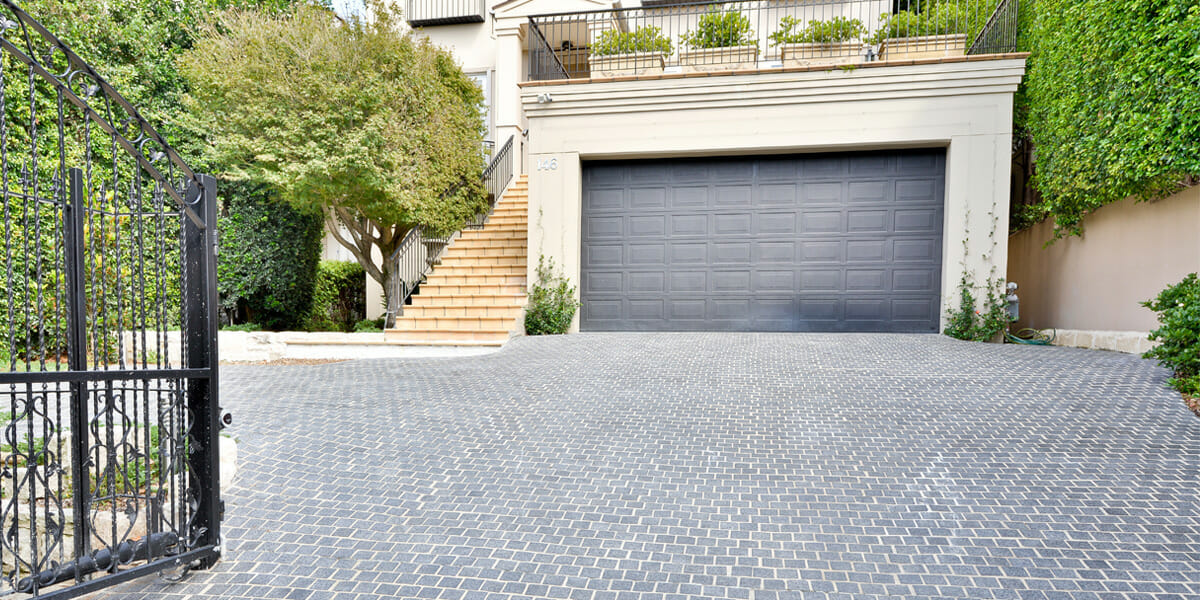
Grey Granite Cobblestones for Driveways: Strength and Style
Grey granite cobblestones combine strength, safety, and timeless appeal, making them a popular choice for Melbourne driveways and outdoor spaces. Their natural flamed texture offers
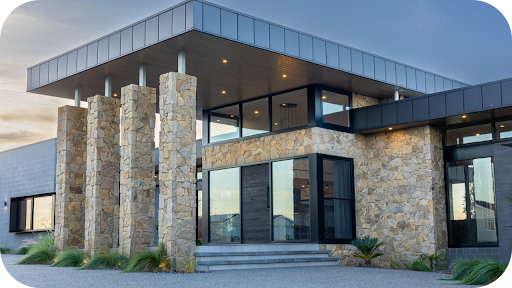
Granite Wall Cladding Melbourne: Modern and Classic Appeal
Granite wall cladding brings both modern sophistication and classic charm to Melbourne architecture. Known for its durability and natural beauty, granite transforms façades, feature walls,


